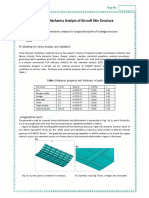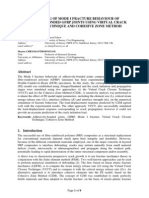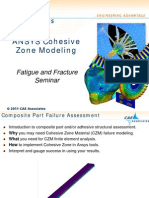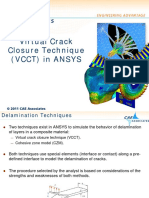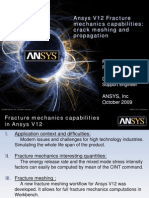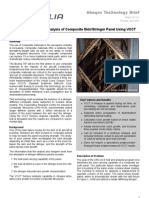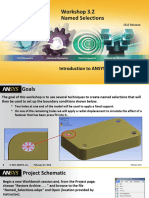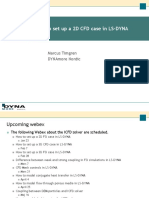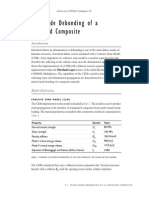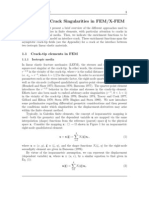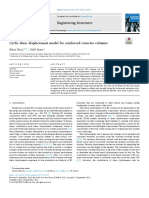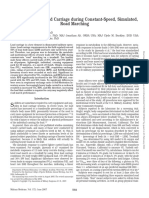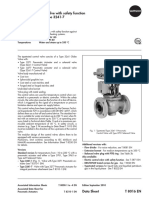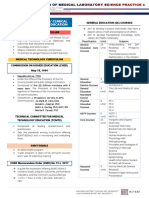0% found this document useful (0 votes)
223 views33 pagesCrack Modeling with Interface Elements
Crack modeling using zero-thickness interface elements is recommended when the crack path is known in advance. Interface elements are easy to implement in 2D and 3D and are available in major FE packages like ABAQUS and LS-DYNA. Alternatives include XFEM and GFEM. The cohesive crack model uses traction-separation laws and requires discretization of weak forms involving new cohesive terms. Common interface elements include solid elements like Q4/T3 and Q8/T6 in 2D and H8 in 3D. Numerical integration requires non-standard schemes for interface elements. Implementation aspects include automatic mesh generation along user-defined paths and using path-following or energy control solution methods. Numerical examples demonstrate the
Uploaded by
yong yangCopyright
© © All Rights Reserved
We take content rights seriously. If you suspect this is your content, claim it here.
Available Formats
Download as PDF, TXT or read online on Scribd
0% found this document useful (0 votes)
223 views33 pagesCrack Modeling with Interface Elements
Crack modeling using zero-thickness interface elements is recommended when the crack path is known in advance. Interface elements are easy to implement in 2D and 3D and are available in major FE packages like ABAQUS and LS-DYNA. Alternatives include XFEM and GFEM. The cohesive crack model uses traction-separation laws and requires discretization of weak forms involving new cohesive terms. Common interface elements include solid elements like Q4/T3 and Q8/T6 in 2D and H8 in 3D. Numerical integration requires non-standard schemes for interface elements. Implementation aspects include automatic mesh generation along user-defined paths and using path-following or energy control solution methods. Numerical examples demonstrate the
Uploaded by
yong yangCopyright
© © All Rights Reserved
We take content rights seriously. If you suspect this is your content, claim it here.
Available Formats
Download as PDF, TXT or read online on Scribd
/ 33







